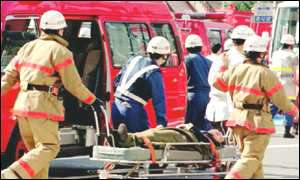
The History of Chemical Weapons - Part 3
The Recent Past
More than 140 nations signed the Chemical Weapons Convention of 1993, which bans the development, production and possession of chemical weapons. Nonetheless, a number of nations are believe to have the weapons. Chemical agents are classified according to the symptoms they cause, such as blistering and nerve agents. It is thought that the threat of chemical attack is from well funded terrorists is more likely than from different nations.
Terrorism
In 1974, acting alone, a Yugoslav immigrant named Muharem Kubergovic, the "Alphabet Bomber", was arrested. He warned the Los Angeles Times that he was preparing nerve-gas attacks. Later police found chemical weapons hidden in his apartment, including about 20 pounds of cyanide gas. He said the first target would be "A" for airport, the press dubbed him, the "Alphabet Bomber".
An armed camp run by a white-supremacist, anti-Semitic group called
The Covenant, The Sword, The Arm of the Lord was raided in 1983. The group was
alleged to have blown up a natural-gas pipeline and to have committed several
other crimes in 1983. After the group's surrender, authorities found 30 gallons
of potassium cyanide.

In 1995, the nerve gas sarin was released in commuter trains on three different Tokyo subway lines by a terrorist cult group. Sarin was concealed in lunch boxes and soft-drink containers and placed on subway train floors. It was released as terrorists punctured the containers with umbrellas before leaving the trains. The incident was timed to coincide with rush hour, when trains were packed with commuters, in which 12 people died and thousands sought medical attention. The attacks came from the apocalyptic Aum Shinrikyo cult.
Image copied from news.bbc.co.uk without permission